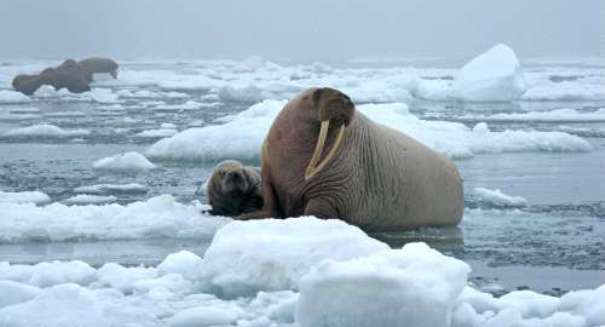
Condensed on beaches, walruses are more susceptible to the spread of disease, stampeding, and the exhaustion of the food supply.
Over 35,000 walruses took to the beaches last Saturday, pictures taken near Point Lay on the Chucki Sea in Northern Alaska reveal. Unlike humans, walruses do not welcome this vacation. Rather, this migration is merely a response to the dwindling amounts of sea ice in the Arctic.
Ecologists have many concerns over the vast number of animals “hauling out” on these beaches. For one, conditions on land are not ideal for the walrus, which prefers to spend his/her day on sea ice diving for shellfish on the ocean floor. According to Tony Fischbach, wildlife biologist with the U.S. Geological Survey, these walruses periodically forage into the ocean, but as nearby sources of food become depleted, journeying far out into the ocean may lead to walruses expending more energy than they gain. His group is beginning to radio track walrus activity in order to answer this question and to learn more about the adaptive behaviors of the walrus, Think Progress reports.
Condensed on beaches, walruses are more susceptible to the spread of disease, stampeding, and the exhaustion of the food supply. The ecological impact of this new phenomenon is unknown.
Similar to the migration of the polar bear, all signs indicate another manifestation of climate change and global warming. In waters across the Pacific, temperature increases of greater than 5 degrees Fahrenheit have been noticed, including a large “blob” in the Gulf of Alaska, a vast expanse within the Bering Sea, and a recent stretch of water off Southern California that emerged earlier this year, Northwest Fisheries Science Center reports.
While the Federal Aviation Administration has requested that pilots avoid flying near these occupied beaches to avoid triggering a stampede, the World Wildlife Fund points directly to global greenhouse gas emissions as culprits of this phenomenon.
Leave a Reply